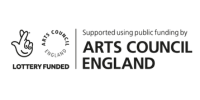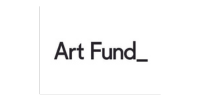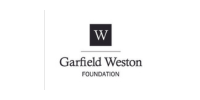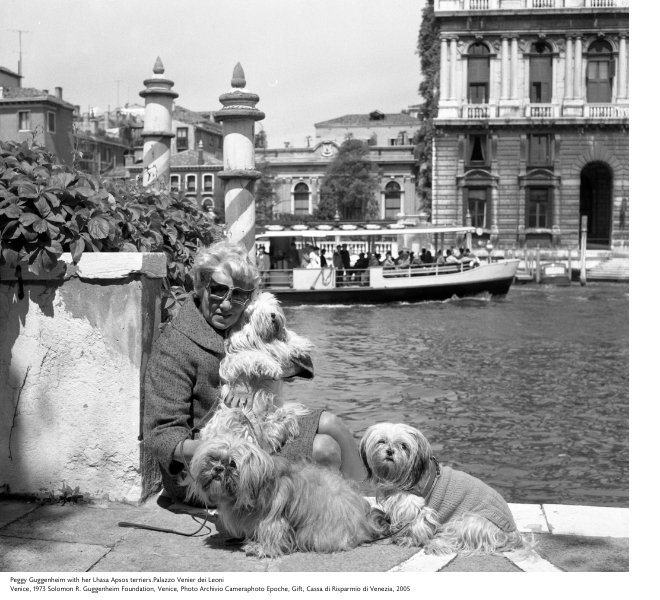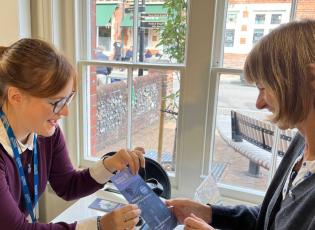From New York heiress to Venetian art patron and collector, Peggy Guggenheim was at the centre of international art circles throughout the 20th century. Born Marguerite ‘Peggy’ Guggenheim in New York on August 26, 1898, the daughter of Benjamin Guggenheim and Florette Seligman. Peggy was the second of three daughters, Benita Guggenheim and Hazel Guggenheim. Benjamin Guggenheim was one of seven brothers who, with their father Meyer, had created a family fortune in the late nineteenth century. In April 1912, Peggy’s father died on the SS Titanic on her maiden voyage.
Growing up in New York City, Guggenheim’s early years were shaped by the conventions of the time, but she developed an early interest in literature. In 1919, Guggenheim came into her inheritance which she saw at the start of her independence. In 1920, Guggenheim briefly worked as a clerk at The Sunwise Turn, a modern bookshop in New York founded by Madge Jenison and Mary Mowbray-Clarke.
In 1921 Guggenheim travelled to Paris and the following year she married Laurence Vail. They had two children, Michael Cedric Sindbad Vail and Pegeen Vail Guggenheim. They lived between Switzerland and France and divorced in 1928. During this time Peggy met and became friends with many artists and writers, including Mary Reynolds and Marcel Duchamp, Djuna Barnes, and Emily Coleman.
Guggenheim met Douglas Garman in 1934, and rented Warblington Castle, Hampshire, for the summer, before Guggenheim bought Yew Tree Cottage, just outside Petersfield in October 1934. Guggenheim lived at the cottage with her daughter, Pegeen, Garman and his daughter, Debbie. In 1935, Sindbad came to stay, and the following year, he enrolled at Bedales, the progressive, co-educational boarding school in nearby Steep, Hampshire. During this period, Guggenheim opened Guggenheim Jeune, on Cork Street, London, which was run by Wyn Henderson. The first exhibition opened on 24 January 1938 with work by Jean Cocteau. Sixteen further solo or group exhibitions followed until the final event in June 1939.
Guggenheim began to conceive of a more ambition plan to open a modern museum in London but the outbreak of the Second World War interrupted her plans, and Guggenheim left London to move to Paris in late 1939. She remained in Paris for a while (where she amassed the bulk of her collection). Leaving France and returning to New York, Guggenheim opened her museum-gallery Art of This Century at 30 West 57th Street. Guggenheim exhibited her Cubist, abstract, and Surrealist art collection and held temporary exhibitions of leading European artists. She also showed the work of many young Americans that were unknown at the time, including Jackson Pollock.
In 1947, Peggy decided to return to Europe, where she exhibited her collection at the 1948 Venice Biennale. Guggenheim wanted to find a home for her collection in Venice and in July 1949 she purchased the Palazzo Venier dei Leoni. From 1951, Guggenheim began to open her home and collection to the public, free of charge, three afternoons a week from Easter to November, and continued to do so until her death in 1979.
Writing in her memoir Out of this Century, she said: “I loved Europe more than America, and when the war ended, I couldn’t wait to go back. ... On my way there, I decided Venice would be my future home. I had always loved it more than any place on earth and felt I would be happy alone there.”
